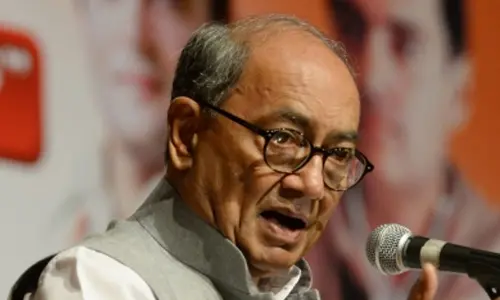Private sector investment to spur growth as demand surges in Indian economy: RBI
Share :

In India, aggregate demand conditions are gathering momentum with a revival in rural consumption on the back of growing incomes and this stimulus to demand is expected to reinvigorate the hitherto subdued participation of the private sector in total investment, which will spur growth, according to the RBI’s monthly bulletin released on Friday.
Mumbai : In India, aggregate demand conditions are gathering momentum with a revival in rural consumption on the back of growing incomes and this stimulus to demand is expected to reinvigorate the hitherto subdued participation of the private sector in total investment, which will spur growth, according to the RBI’s monthly bulletin released on Friday.
The positive outlook for India comes at a time when "persistent geopolitical tensions, rekindled fears of a potential recession in key economies and financial market volatility in response to monetary policy divergence cast a shadow on global economic prospects even as inflation moderated grudgingly across countries", the bulletin points out.
The RBI report states that aggregate demand conditions are gathering momentum after some slack in the first quarter of 2024-25. Rural consumption spending on the back of growing incomes is beginning to drive volume growth in fast-moving consumer goods (FMCG), reflecting strengthening fundamentals.
Utility penetration - LPG, electricity, two-wheelers - is bringing with it additional spends alongside newly adopted categories, including toilet and floor cleaners, bottled soft drinks, and insecticide.
Rural saving is also on the rise as evident in the rising number and outstanding amounts of savings bank accounts.
Receding of inflation pressures appears to be the most important metric in rural spending resurgence, driving a catchup with urban consumption volumes.
Reflecting these forces of turnaround, FMCG companies are starting to see green shoots of revival, portending a seismic shift in their markets as price stability sets in and expectations of a better monsoon as well as higher budgetary allocations for the rural economy push up volume growth, the report adds.
It also observes that cumulative precipitation in the southwest monsoon season has achieved normalcy and is, in fact, above the long-period average (LPA) since end-July, improving water storage and soil moisture.
The flip side is that it has been unusually heavy in southern and central India but deficient in the east and northeast.
Meanwhile, kharif sowing acreage has been higher year-on-year (y-o-y) in almost all crops barring cotton.
An influential view has pointed out that agriculture has been the key focus of India’s development strategy, with the country achieving the highest annual growth rate of 5 per cent in the farm sector in the last seven years, the report adds.
Turning to the manufacturing sector the report states that sales growth was resilient in the case of electrical machinery, automobiles, food products, pharmaceuticals and non-ferrous metals but muted in respect of iron and steel, cement, chemicals and textiles.
Sales growth also remained low for information technology (IT) and non-IT service sector companies.
Staff costs inched up in the manufacturing sector but debt servicing capability measured in terms of the interest coverage ratio remained stable. Against this backdrop, profit margins remained stable in both manufacturing and services sectors. The growth of the capital stock was the highest in industries such as electrical and optical equipment, machinery, rubber and plastic products, and chemicals. Among services, the growth of capital stock was highest in hotels and restaurants, health and social work, and education. Labour quality measured by workers’ skill content has grown and sustained across all sectors, with the composition of workers shifting towards higher educated categories with more remunerative jobs, the report added.















